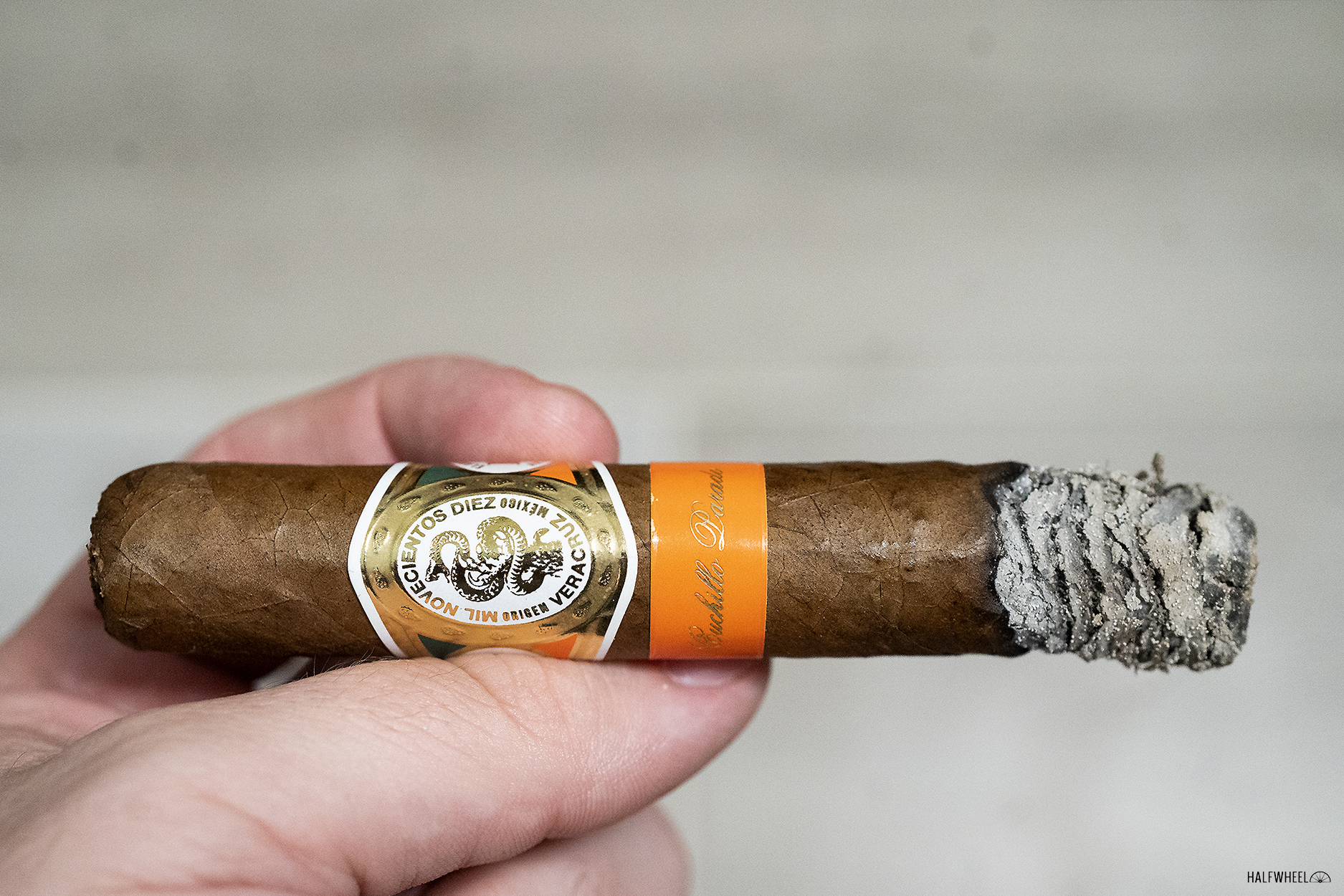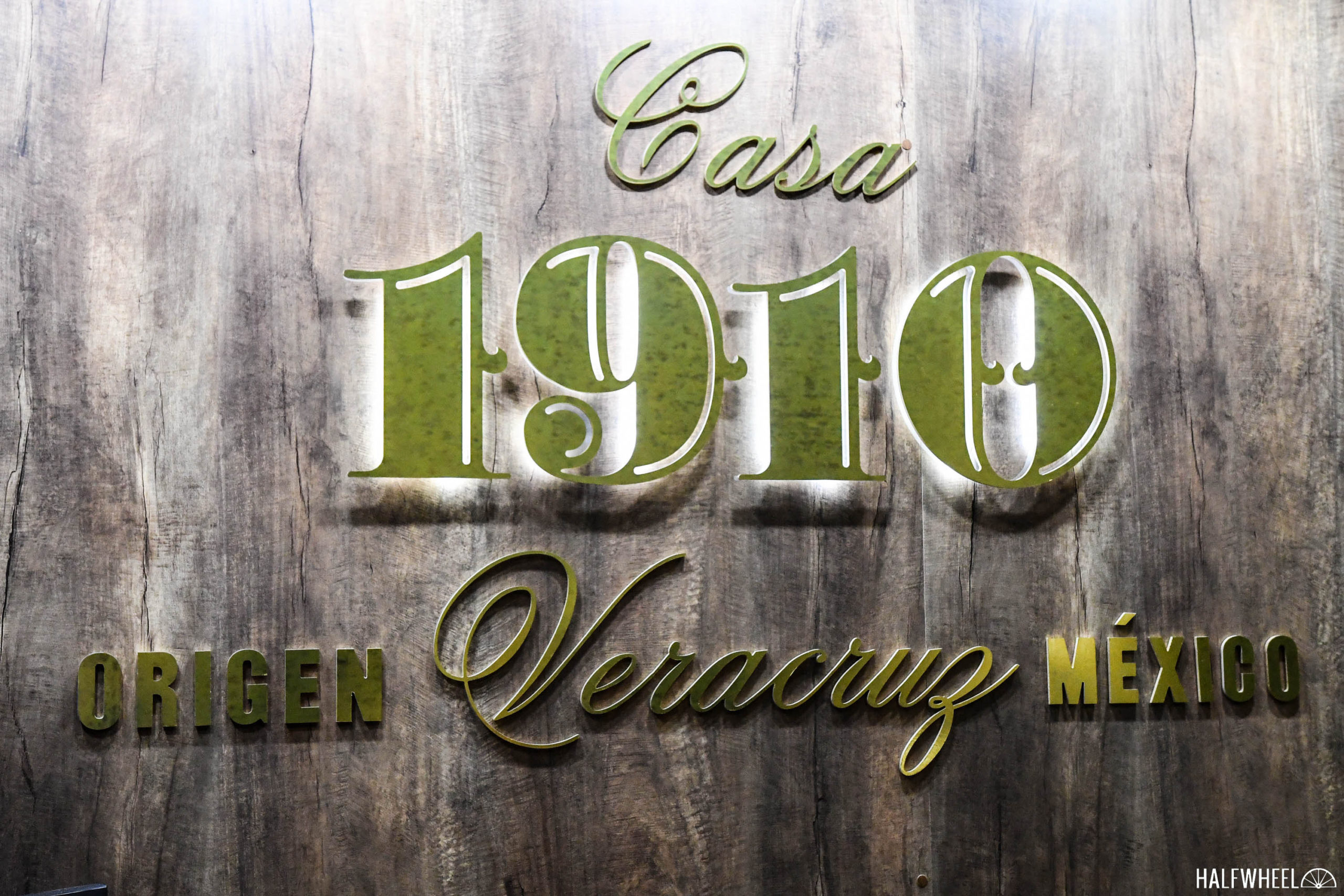When it comes to companies making cigars in Mexico, the list of names is fairly short. But in 2021, a new company called Casa 1910 entered the premium cigar industry with the goal of changing the way cigar smokers think about Mexico while also creating a lifestyle brand that celebrates the country’s heritage and culture.
The company gets its name from the year of the Mexican Revolution, while its debut cigar, the Cuchillo Parado, references the town in the state of Chihuahua where the revolution began. It is a Mexican puro that uses a Sumatra seed wrapper that has been aged for three years. The binder, which comes from the San Andrês region, has been aged for five years. Once those two leaves are combined with the San Andrés-grown filler, the finished cigars are aged for another six to eight months in a process that the company says helps ensure a smooth and flavorful experience. That aging happens at an undisclosed factory in San Andrés Tuxtla in the state of Veracruz.

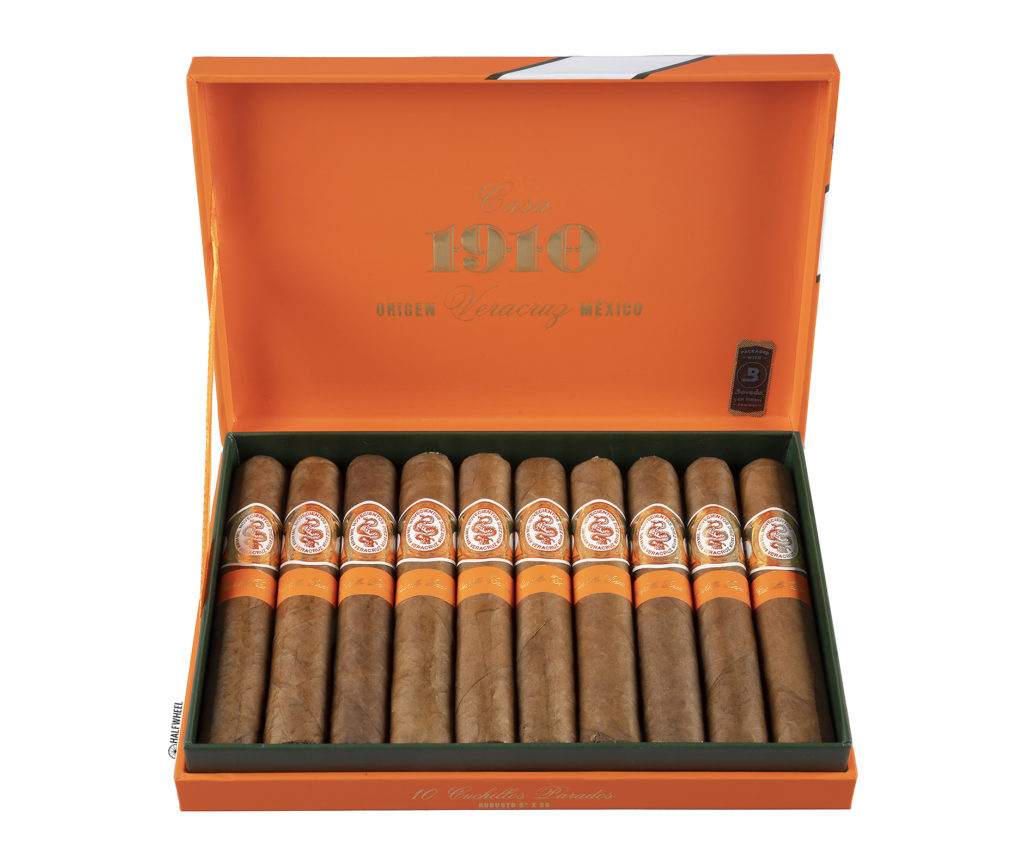
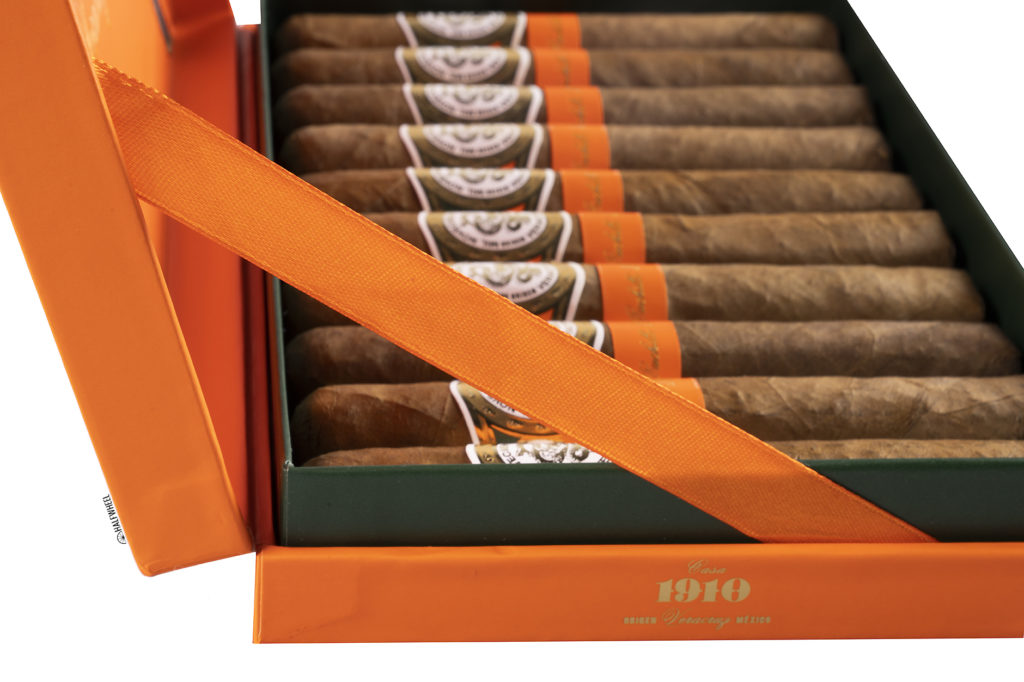
The blend was created by Juan Manuel Santiago Casillas, better known as Manolo Santiago, who worked as a marketing manager for Importadora y Exportadora de Puros y Tabacos S.A. de C.V.—the Mexican distributor of Cuban cigars—and is a “Master in Habanos,” the highest designation given to those who graduate from Habanos S.A.’s Habanos Academy, a training program run by the Cuban cigar conglomerate.

- Cigar Reviewed: Casa 1910 Cuchillo Parado
- Country of Origin: Mexico
- Factory: Undisclosed
- Wrapper: Mexico (Sumatra)
- Binder: Mexico (San Andrés)
- Filler: Mexico (San Andrés)
- Length: 5 Inches
- Ring Gauge: 50
- Vitola: Robusto
- MSRP: $15 (Box of 10, $150; Box of 20, $300)
- Release Date: November 2021
- Number of Cigars Released: Regular Production
- Number of Cigars Smoked For Review: 3
I have to think that the orange and gold in the band is playing tricks with my eyes when it comes to determining the shade of the wrapper, as it seems to have a bit of orange in it as well, though not as much as the Espinosa Laranja, which uses a Brazilian wrapper. It has a nice tanned shade to it, just on the light side of medium brown. The wrapper feels both thin and supple, as its elasticity reveals some bumps from the binder, and in some ways it reminds me of a Cuban-grown leaf, though the veins structure is different enough to dash any serious comparisons. There’s a bit of oiliness to the leaf that’s most noticeable in the flat spots of the cigar, as opposed to the veins, which feel drier. It is rolled firmly and seeing well from a visual perspective, and each cap is applied well. The aroma is sweet and light, a bit like the core of a loaf of bread, then adding the more complete smell of a freshly baked yet cooled loaf. That aroma get accented by a bit of light wood, straw and pepper, as well as varying amount of cool cream. The cold draw is very good with airflow, while the flavor now has a bit of buttered bread, and less of the previously mentioned accent notes, if any at all.
The first puffs of the Casa 1910 Cuchillo Parado taste almost exactly what I would have expected given the prelight aroma and cold draw, only now with the addition of some heat. The bread is warmed but not toasty, while the pepper and woods are now hitting my taste buds with a bit of life. There’s a slightly sweet campfire aroma in the early goings, while retrohales have bright, white pepper backed up by a bit of an Altoids sensation on the finish. When that first retrohale hits, it shows that this Casa 1910 means business and seemingly knows what it is doing in creating the experience it has in store. It’s also exactly not what I think of from a cigar with Mexican tobacco, given that the typical experience means a Mexican San Andrés wrapper gets paired with Nicaraguan tobacco in the binder and filler. This blend is a lighter profile that doesn’t have nearly as much earthiness, but it is surprisingly peppery, particularly through the nose. Construction is very good in terms of draw and smoke production, while the burn line is good but not great, which means that at times the ash looks kind of sloppy. Flavor is medium-plus while body and strength are medium.
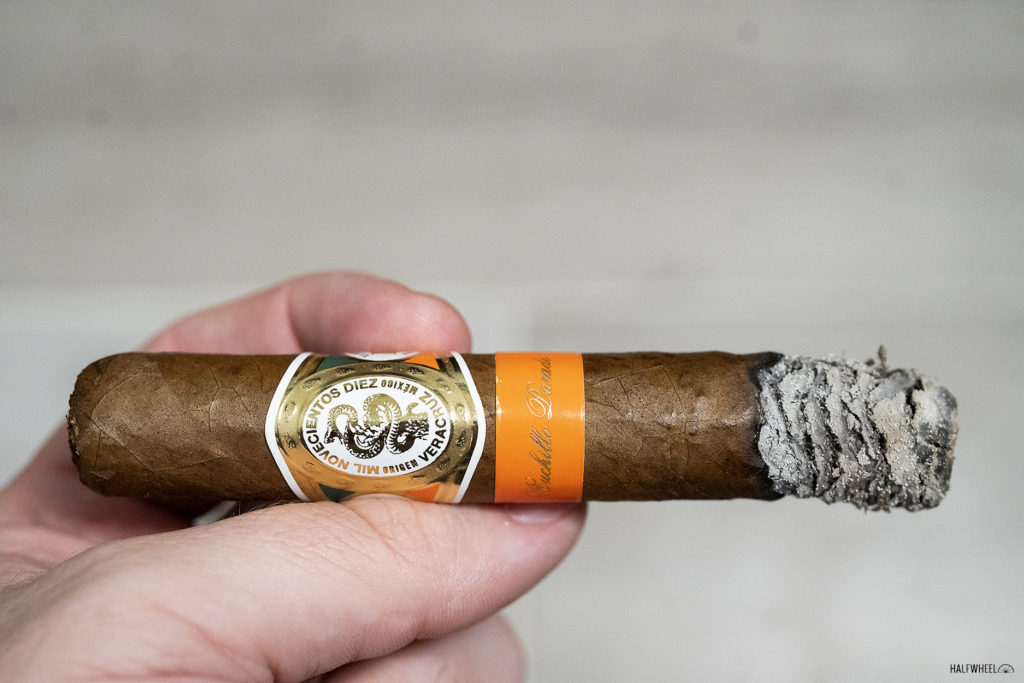
The second third starts with a bit more character and texture from the smoke, as it has the same kind of texture as biting into dry Chex or shredded wheat, with lots of individual bits of texture hitting the tongue. A bit of black pepper builds out of that, mildly on the taste buds but much more pronounced through the nostrils. While the body isn’t as heavy as tobacco from Nicaragua’s Ometepe region, there is a sharpness and punch from the pepper that reminds me of leaves from that part of the world. Some of the samples pick up a bit of creaminess to balance that flavor change, or occasionally even swing the scales completely, though a retrohale is always right there to swing the scales back. The flavor has an occasional tendency to begin taking on a slightly sour or sharp wood flavor, which makes me think that despite the aging of the tobacco and cigars, a bit more might still be needed. By the final puffs of this section, the sour wood flavor is more pronounced and driving the profile into the final third. Construction is very good, the burn line issues have resolved themselves and smoke production and combustion are on point. Flavor is now medium-full, if not always for the right reasons, while body is medium and strength is just shy of medium.
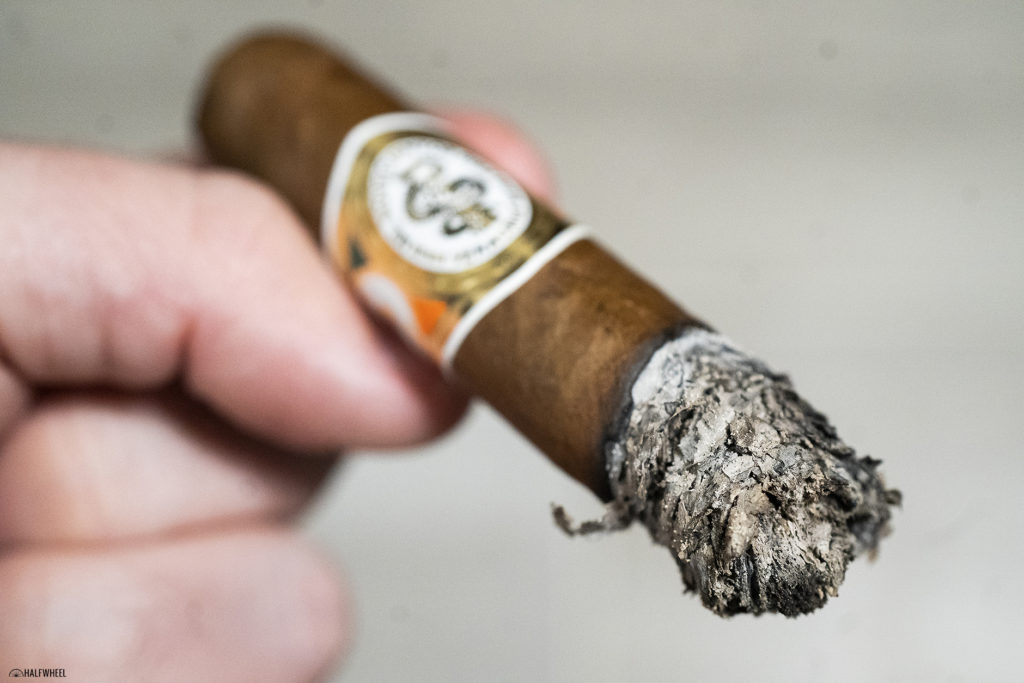
The final third of the Casa 1910 Cuchillo Parado brings about a bit more earth, which also brings about a bit of a smoky flavor that hits the palate differently than the cigar has done to this point. In some ways, it’s like the acidity of lukewarm coffee that has been on the warmer for too long, while in other ways it reminds me a bit of the drier terroir of Honduras. The smoky flavor turns to a bit of char when it comes to the woods in the profile, which turns the flavor into an irritating one, leading me to think of a spent fireplace not long after. A bit of creaminess tries to salvage this turn, though that seems only make things sour. The final third is an interesting evolution of the profile laid out in the first two thirds, a fairly significant change in intensity even though the core flavors are largely the same as what the cigar has been offering since the start. Construction and combustion are still very good, smoke production is still abundant, and the burn line has evened up. Flavor is full, body is medium, and strength is medium.

Final Notes
- The company who designed Casa 1910’s branding, Anagrama, features the company on its website and talks about how the Casa 1910 logo and artwork came about.
- Casa 1910 made its industry debut at the 2021 PCA Convention & Trade Show, where you can hear more about the company.
- I have been fortunate to visit the San Andrés region of Mexico to see tobacco fields and the Turrent factory, and I can tell you that it is an absolutely gorgeous place, with the feeling that you truly are in a valley. Having started the trip in Veracruz, it was also my first exposure to the culture and cuisine of that region of the country, the latter of which included a lot of octopus.
- Manolo Santiago said that this cigar can be paired with tequila, and while I have not yet tried that pairing, I could certainly see it working with a nice añejo.
- I don’t drink a lot of tequila, but I always enjoy the higher end sippers as opposed to the more common expressions that are used for shots and margaritas.
- I did not find there to be much in the way of nicotine strength in any of the three cigars.
- The cigars for this review were purchased by halfwheel.
- Final smoking time was one hour and 45 minutes on average.
I’ve long held Mexican tobacco in pretty high regard, largely due to the wrappers that have been used on some very good if not outright great cigars over the past several years. As such, I tend to have a decent idea of what I expect from a cigar that has Mexican tobacco in it, but this profile shows another side of Mexican tobacco. It’s lighter in body and offers a lighter flavor profile that has some similarities with Sumatra tobacco grown elsewhere, though with a unique spin here due to the Mexican soil. Each sample can be summed up as enjoyable with some issues, which can be attributed to varying derailments by sourness or char. That said, this is still a cigar I’d smoke again and one that has me excited to see what else Casa 1910 will have to offer, and one I would recommend to almost anyone in order to get another flavor profile from Mexican tobacco.

